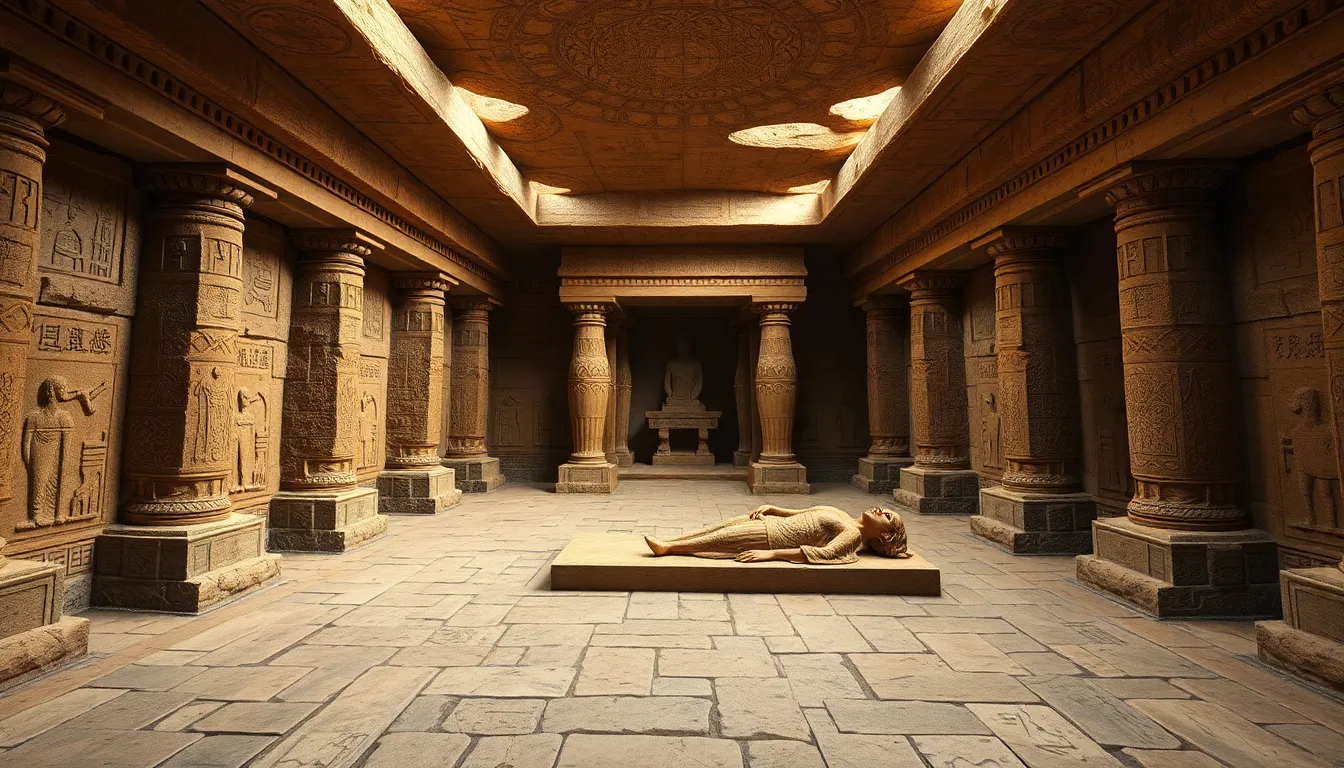The Tomb of the Great Royal Wife: A Study of Royal Burials
I. Introduction
Throughout history, royal burials have provided a glimpse into the beliefs, customs, and power dynamics of ancient civilizations. The funerary practices surrounding royalty were steeped in significance, reflecting not just individual status but also the collective values of society.
Among these figures, the Great Royal Wife held a pivotal role within the context of royal lineage, often serving as a political ally and cultural symbol in her own right. This study aims to delve into the complexities surrounding the tomb of the Great Royal Wife, exploring its historical context, archaeological significance, and the rituals associated with royal burials.
II. Historical Context of Royal Burials
The significance of burial practices in ancient cultures cannot be overstated. These rituals were often deeply intertwined with religious beliefs, societal norms, and the political landscape of the time.
- Significance of burial practices: They served as a means to honor the deceased, facilitate their journey to the afterlife, and reinforce the power of the living.
- Evolution of burial traditions: Over time, practices evolved from simple grave markers to elaborate tombs adorned with treasures.
- Comparative analysis: Examining royal burials across civilizations—from the pyramids of Egypt to the tombs of Mesopotamia—reveals both shared themes and unique cultural expressions.
III. The Great Royal Wife: Role and Significance
The title of Great Royal Wife was not merely ceremonial; it represented a position of immense importance and influence within the royal hierarchy.
- Definition and importance: The Great Royal Wife was often the chief consort of the pharaoh, tasked with producing heirs and ensuring the continuation of the royal lineage.
- Historical examples: Figures such as Nefertiti and Hatshepsut exemplify the power and influence wielded by Great Royal Wives, shaping political agendas and cultural narratives.
- Influence on landscapes: These women often played crucial roles in diplomacy and governance, impacting both domestic and foreign policies.
IV. Archaeological Discoveries Related to the Tomb
The discovery of the tomb of a Great Royal Wife marks a significant moment in Egyptology, shedding light on the lives and deaths of these powerful women.
- Location and excavation history: The tomb, located in the Valley of the Kings, was first excavated in the early 20th century, revealing a wealth of artifacts.
- Key artifacts: Items such as jewelry, pottery, and beautifully crafted sarcophagi have provided insights into the aesthetic and functional aspects of royal burials.
- Insights gained: These discoveries have enhanced our understanding of royal life, highlighting the blend of luxury and ritual that characterized their existence.
V. Symbolism and Rituals in Royal Burials
The rituals associated with the burial of a Great Royal Wife were rich in symbolism, reflecting the cultural and religious beliefs of ancient Egypt.
- Burial rituals: These often included elaborate ceremonies, offerings, and the placement of grave goods to aid the deceased in the afterlife.
- Symbolic meanings: Artifacts found in tombs, such as amulets and statues, were believed to have protective qualities and to serve the deceased in their journey.
- Role of religion: The intertwining of mythology and burial practices emphasized the belief in an afterlife, where the deceased would continue to exist among the gods.
VI. Comparative Analysis of Royal Burials
To understand the significance of royal burials, it is essential to compare practices across different cultures.
- Case studies: Royal burials in Egypt, Mesopotamia, and China each reflect unique cultural values and practices.
- Similarities and differences: While many cultures shared the practice of burying royal figures with grave goods, the specific rituals and beliefs surrounding them varied widely.
- Geographical influence: Environmental factors and cultural exchanges played significant roles in shaping burial customs.
VII. Modern Interpretations and Legacy
Contemporary scholars continue to explore the significance of royal burials, providing new insights and interpretations of these ancient practices.
- Scholarly views: Modern analyses often focus on how these burials reflect the power dynamics and social structures of ancient societies.
- Influence on cultural practices: The legacies of these royal burials can be seen in modern funeral practices and memorialization efforts.
- Preservation efforts: Challenges such as tourism and environmental factors pose threats to these ancient sites, prompting ongoing preservation initiatives.
VIII. Conclusion
This study highlights the intricate tapestry of royal burials, particularly focusing on the Great Royal Wife’s role in ancient Egyptian society. The findings reveal not only the significance of these burial practices but also the enduring legacy of these powerful women in shaping royal history.
As we continue to investigate the tombs and artifacts left behind, the relevance of the Great Royal Wife in understanding the complexities of royal lineage and cultural heritage remains profound. Future research will undoubtedly shed more light on the significance of these burials, bridging the gap between our understanding and the mysteries of the past.




